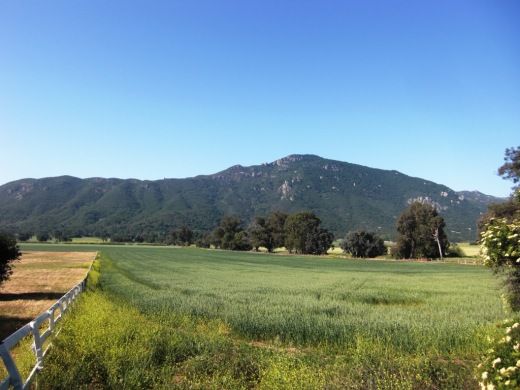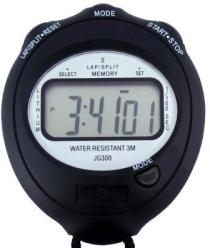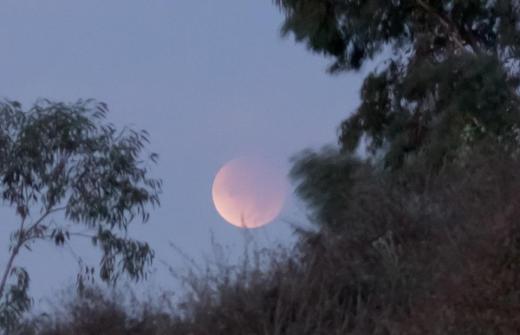The other week, a friend asked me for advice on how to train for a hilly trail race. She is a solid age group runner on the roads, having run plenty of 5Ks, 10Ks and a half marathon.

She signed up for the Bulldog 25K race on August 27th and asked for my advice. How do I train for a hilly 25K race with a net elevation gain of 4,000 feet, with a run up Bulldog Mountain that reaches over 2,500 feet in vertical elevation.
I have some friends that run dozens of miles in the trails every weekend, if not 40 to 50+ miles. I run trails, but not to that degree. I'm lucky to have trails surrounding me in close proximity to my house, but I don't consider myself to be a trail "expert." But I do have some experience running trail races.
Several times I won the Bulldog 25K (previously 30K), though I attribute that partially to luck...you know there's always plenty of people out there that can beat you in a race...it's just a matter of who actually shows up to the race. As an example, in 2002 I finished 2nd in the Catalina Marathon in a time (2:56:47) that typically would have won the race. But I happened to be racing against a guy that finished 10th in the 1500 meters at the 1988 Olympics in Seoul, South Korea. There's always somebody faster out there!
So although I don't really consider myself a big time trail runner, I do have some decent performances on the trails. And with that modest self intro, here goes with my advice for training for a hilly trail race:
1. Train on Trails: DUH! But of course you must get used to the feel of running on trails. Does this mean you have to run trails 100% of the time? Of course not.
2. Train on Hills on Trails: You need to acclimate your body to the calf-numbing, heart-pounding uphills and the quad-hammering downhills. The downhills are quite deceiving on a brutal course like Bulldog, as your quads will give out on you like limp strands of spaghetti if they're not conditioned for the tremendous thrashing they're about to undertake. So prepare your body on training runs.
3. Change Gears Uphill: Gear your body for slower going uphill. Mentally and physically change gears by shortening your stride and using your upper body to push your way through the uphills. Upper body strength will help you, so consider some moderate weight training if you don't already hit the gym 2-3 times per week. Breathe. Don't worry that you're going slow. You're going, and that's what's important.
4. Go With the Flow Downhill: Don't constantly break your stride. Use gravity to your favor and go for it! Keep good eye contact both looking forward and down below so you can step in the right places. Not sure if good foot/eye coordination is inherited or learned, but can't hurt to practice it.
5. Take the Tangents but Steer Clear of Rocks: In other words, take the shortest path whenever possible in a race...and practice it when you train. But if you're on a rocky trail, do what it takes not to thrash your feet on sharp rocks. Look at it as a challenge, which it is. You don't want a sharp rock stabbing you in the foot. Run on your forefoot, not your heels, so you are more nimble.
6. Drink Before, Early and Often: Applies to any race but a 25K in the mountains you have less water stops, so prepare for that. I take a bottle of Gatorade (or equivalent) to the starting line and down it right before the start. Sloshes around a bit in my belly for awhile but it helps me get through the race.
7. Slow and Steady, Ever-Ready: Every single time I race, trails or road, long or short, there are a bunch of young kids that go out like they're running the 800 meters in the Olympics. Let em go. They will come back to you soon enough. If they don't, good for them. But generally they will wear down. Don't be one of them.
8. Single Track Running: There are trail sections of Bulldog that are single track, with only enough space for 1 person across. I get frustrated at times getting "stuck" behind someone who is running too slow. If the right moment opens up, I'll pass them. But otherwise, take it easy and know that soon enough the trail will open up. And you've conserved energy in the meantime.
9. Uphills Can Brutalize: The men (women) are separated from the boys (girls) so to speak as soon as you hit the hills. At Bulldog, the steep hills appear about 3 miles into the race. Always fun to see how many people wilt up those hills. So keep this in mind mentally. Don't stop and don't psych yourself out when you see a hill that looks like Mount Everest in front of you. Grin and bear it. (This is kind of redundant to #3 above, but hey, it's important.) Don't hesitate taking some brief (e.g. 20-30 second) walk breaks if you need them, especially on nearly vertical hills (there's a few on the Bulldog course).
10. Wear Glasses and a Hat: Wear a hat and sunscreen to minimize the sun damage to your skin and keep the sun out of your eyes. Pray for overcast skies and cool temps if you believe in prayer. I recommend wearing glasses as for some reason, it seems flies and gnats appear when I don't wear them, causing discomfort when they fly into my eyes. Think of them as your little windshield. If overcast, place them on your head for use when the sun comes out.
So there you have it, 10 tips that might help you in your quest to run a hilly, long trail race. Hope my experiences, good and bad, help you do your best on race day!
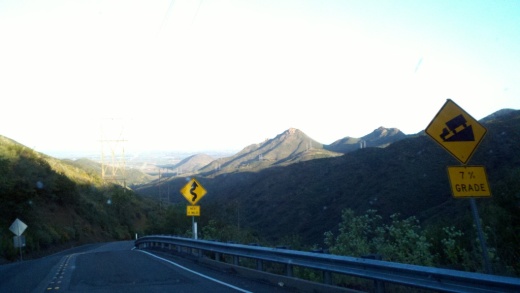 Driving west on Potrero Road while deftly taking picture before navigating twisty, hilly turns.
Driving west on Potrero Road while deftly taking picture before navigating twisty, hilly turns. Malibu in the morning does not suck
Malibu in the morning does not suck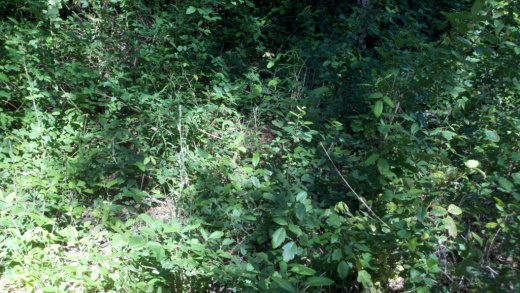 Sycamore Canyon is beautiful but do watch out for poison oak if you veer off the main road/trail.
Sycamore Canyon is beautiful but do watch out for poison oak if you veer off the main road/trail.
